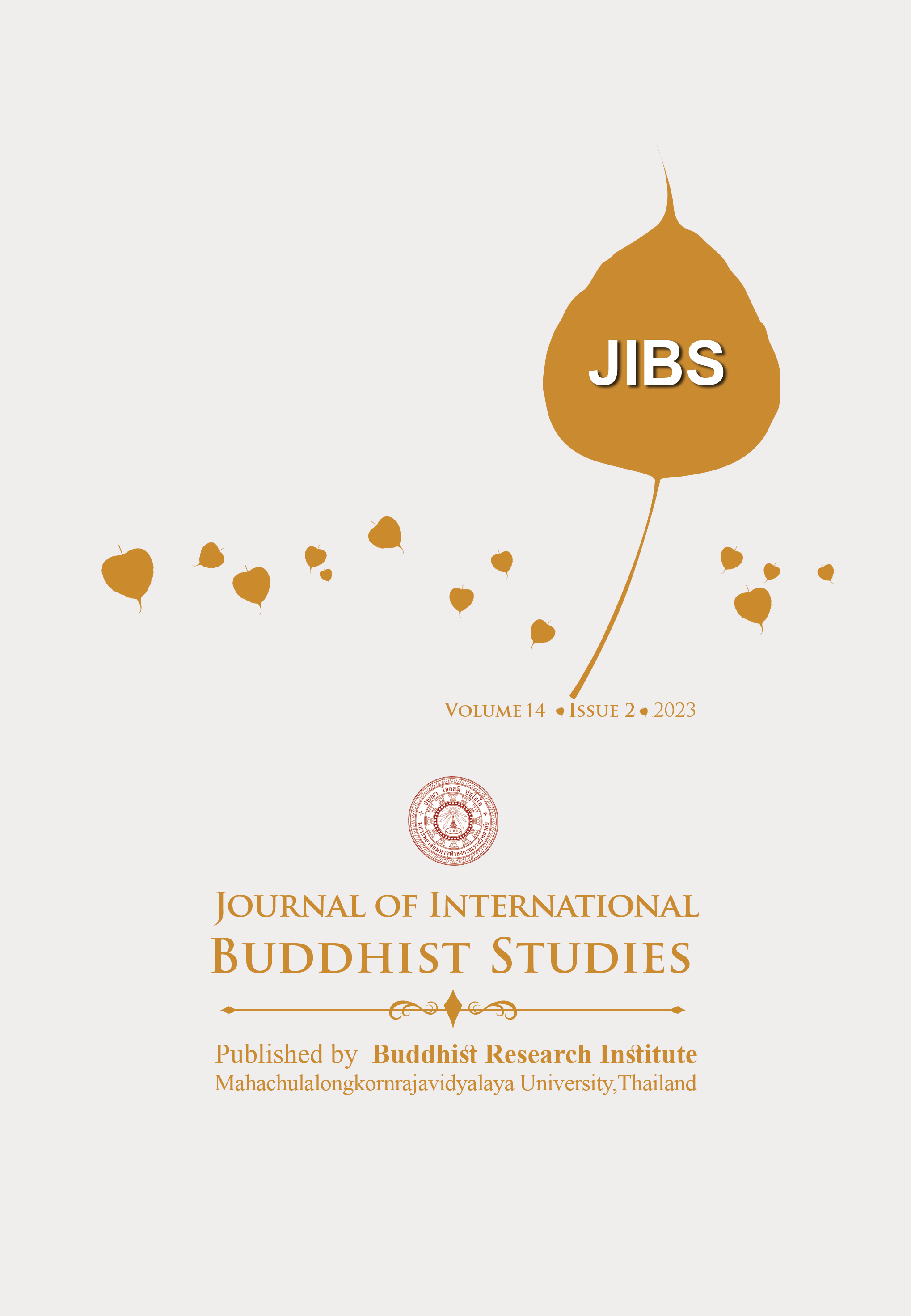The Lion and the Bull: Inquiry on Two Animal Symbols in Early Buddhism
Keywords:
Animal Symbolism, Buddhism, Lion, Bull, Urbanization in Buddhism, Early BuddhismAbstract
The symbolism of two animals, namely the bull and the lion, within Buddhist tradition can be traced back to an ancient heritage that originates from the Mesopotamian civilization. This heritage finds expression in Vedic wisdom, against which Buddhism establishes a dialectical framework of symbolic reversals and transformations. While traditionally associated with royalty, power, and the sun, the lion is reimagined within Buddhism as the protector of a pacifist doctrine, despite its historical association with the warlike dominance exerted by humans over nature. Conversely, the bull, symbolizing fertility of the earth and representing earthly passions, assumes a significant role within Buddhism as the patron of rigor and ascetic practices. It serves as the true progenitor of yoga, embodying a novel concept through its subjugation to the earth by means of a yoke. This subordination enables the bull to harness its power towards the production of sustenance, thus forging a transformative path.
References
Analayo, Bhikkhu. “The Historical Value of the Pāli Discourses.” Indo-Iranian Journal 55 (2012): 224-226.
Apple, James. “Eschatology and world order in Buddhist formations.” Religious Studies and Theology 29 (2010), 112.
Bailey, Greg and Ian Mabbett. The Sociology of Early Buddhism. UK: Cambridge University Press, 2003.
Bronkhorst, Johannes. “Buddhism and sacrifice.” Asiatische Studien/Études Asiatiques 66 (2012): 7-17.
Chaturvedi, Neekee “The literary characteristics of the Sutta Nipāta.” Proceedings of the Indian History Congress 70 (2009).
Desset, Francois, Meysam Shahsavari, Massimo Vidale. “The Marḫašean two-faced ‘god’: new insights into the iconographic and religious landscapes of the halil rud valley civilization and third millennium BCE south-eastern Iran.” Journal of Sistan and Baluchistan Studies 1 (2022): 60-61.
Dhyansky, Yan Y. “The Indus Valley Origin of Yoga Practice.” Artibus Asiae 48 (1987): 94.
Divino, Federico “Reaching the End of the World: An Anthropological Reading of Early Buddhist Medicine and Ascetic Practices.” Religions 14 (2023b).
________. “An Anthropological Outline of the Sutta Nipāta: The Contemplative Experience in Early Buddhist Poetry.” Religions 14 (2023a).
Hoernle, Rudolf. “The Sutta Nipāta in a Sanskrit Version from Eastern Turkestan.” Journal of the Royal Asiatic Society 48 (1916).
Joshi, Japat P. and Asko Parpola. “Corpus of Indus Seals and Inscriptions.” Memoirs of the Archaeological Survey of India 86 (1987): 1-200.
Kenoyer, Jonathan M. Ancient Cities of the Indus Valley Civilization. UK: Oxford University Press, 1998.
McEvilley, Thomas “An archaeology of yoga.” RES: Anthropology and Aesthetics 1 (1981): 45, 48.
Obeyesekere, Gananath. “The myth of the human sacrifice: history, story and debate in a Buddhist chronicle.” Social Analysis: The International Journal of Social and Cultural Practice 25 (1989).
Olijdam,Eric and Richard H. Spoor. Intercultural Relations between South and Southwest Asia: Studies in commemoration of E.C.L. During Caspers (1934-1996). UK: BAR Publishing, 2008.
Olivelle, Patrick. Chapter 9: Caste and Purity in Collected Essays. Italy: Firenze University Press, 2008.
________. The Āśrama system: The history and hermeneutics of a religious institution. UK: Oxford University Press, 1993.
Parpola, Asko. Iconographic Evidence of Mesopotamian Influence on Harappan Ideology and Its Survival in the Royal Rites of the Veda and Hinduism. UK: Oxford Archaeopress Publishing, 2020.
________. The Roots of Hinduism: The Early Aryans and the Indus Civilization. UK: Oxford University Press, 2015.
Powers, John A. Bull of a Man: Images of Masculinity, Sex, and the Body in Indian Buddhism. UK: Harvard University Press, 2009.
Rigopoulos, Antonio “Asceti e termitai. A proposito di Buddhacarita 7, 15.” Consonanze 11 (2017): 195-215.
Robinson, Andrew. The Indus. London: Reakiton, 2015.
Salomon, Andrew G. Gāndhārī Version of the Rhinoceros Sutra: British Library Kharoṣṭhi Fragment 5B. USA: University of Washington Press, 2000.
Shinde,Vasant and Rick J. Willis. “A New Type of Inscribed Copper Plate from Indus Valley (Harappan) Civilization.” Ancient Asia 5 (2014): 1-10.
Squarcini, Federica. Yogasūtra. Turin: Giulio Einaudi Editore, 2015.
________. “Pāṣaṇḍin, Vaitaṇḍika, Vedanindaka and Nāstika. on Criticism, Dissenters and Polemics and the South Asian Struggle for the Semiotic Primacy of Veridiction.” Orientalia Suecana 60 (2011).
Taheri, Sadreddin “The prototype of Lion in Ancient Iran, Mesopotamia & Egypt.” Honar-Ha-Ye-Ziba: Honar-Ha-Ye-Tajassomi 4 (2012).
Tilmann, Vetter. The Ideas and Meditative Practices of Early Buddhism. Leiden: Brill, 1988.
Wiltshire, Martin G. Ascetic figures before and in early Buddhism: the emergence of Gautama as the Buddha. Berlin: Mouton de Gruyter, 1990.







